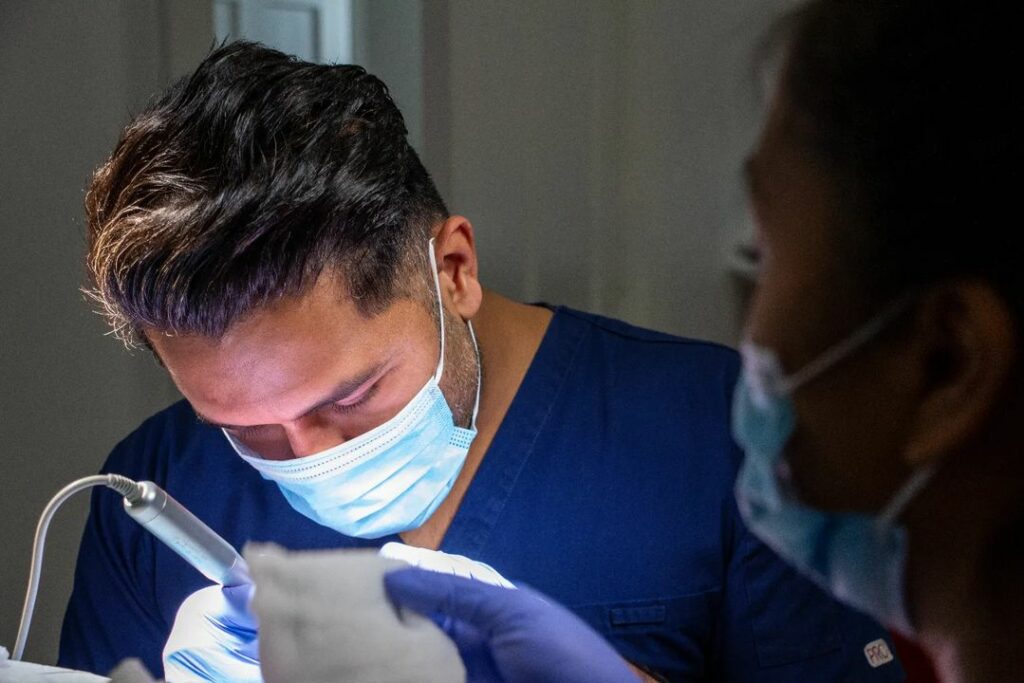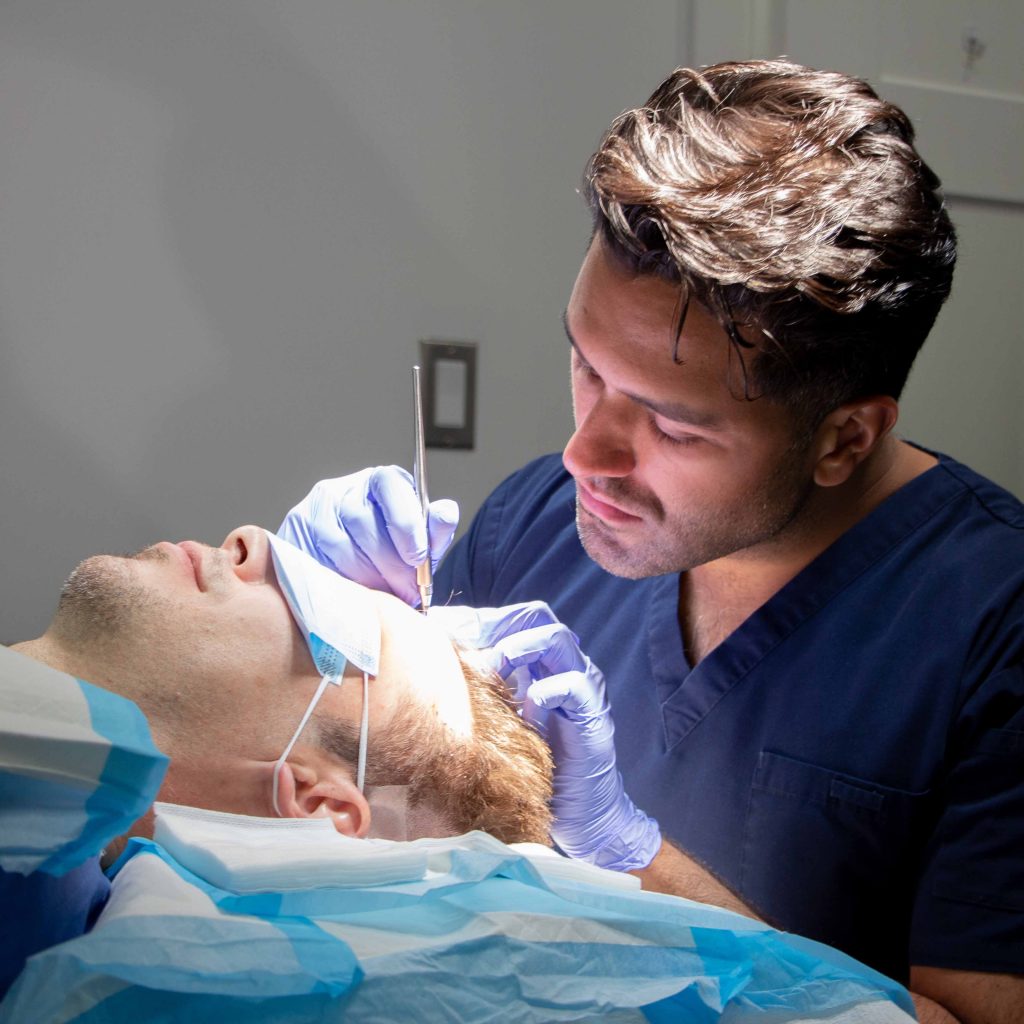Treatment is a Great Option for Most People
Although, certain factors will need to be discussed with your surgeon to determine if the treatment is right for you. Our team acquires a thorough medical history and performs a comprehensive assessment that includes:
Extent of the Hair Loss
It is important to evaluate the current state of the hair loss and how it might progress. With ongoing hair loss, we need to determine what your hair might look like in three, five, and ten years. If you have widespread baldness and thinning, then hair transplants might not be the best solution.
Cause of Hair Loss
Sometimes, hair loss occurs as a one-time circumstance because of trauma, stress, or illness. You might not be a good candidate if the hair loss occurred due to medications or chemotherapy.
Scalp Condition
Hair transplants don’t work well for people who have experienced injuries to the head. Thick scars on the scalp make it difficult to transplant the hair follicles.
Donor Zone
Do you have good, healthy hair follicles that can be harvested from the donor zone? We will evaluate the density of the area and the amount of hair that is available to determine how much coverage can be transplanted.
Patient Expectations
The severity of your hair loss will affect whether your expectations can be met with this treatment. Every hairline is custom-designed. Dr. Sharma will discuss the desired density and appearance with you during your consultation.
Our Expert Staff May Employ the Following Tests to Diagnose Your Hair Loss
Microscopic Examination of Hair Shafts and Bulbs
Besides examining your hair for chemical damage stemming from perms, colour and straighteners, we use a microscope to look for inborn hair shaft irregularities such as shaft twisting, central cortex bubbles and shaft constrictions. We also examine the connection of the hair shaft to both the scalp and the underlying bulb. Your hair will be sorted by diameter or calibre, ranging from coarse hair (80 microns per strand) to normal (70 microns) to fine (60 microns or less). The diameter of the hair determines its mass or cross-sectional area. Someone with 100,000 strands of coarse hairs has double the amount of someone with 100,000 strands of fine hair.
Density Count
To establish the number of hairs present per square centimetre of the scalp, we crop a small area of the scalp to about 1 mm in length. Next, we take a photo of the tightly trimmed area, enlarge the photo and count the hairs. Most non-balding scalps have about 200 full-sized strands of hair per square centimetre, organized in 80 to 90 individual follicles containing one to four strands.
Trichometry to Determine Hair Mass
Using trichometry, we calculate hair mass in isolated bundles of hair. The procedure takes about 10 minutes and doesn’t require any hair to be cut. Superior to other methods in accuracy and precision, trichometry can identify hair loss in both men and women. By finding minor changes in hair calibre or amount, this technology calculates baldness way before it sets in. It also can be used to monitor your body’s reaction to prescribed treatments.
Norwood Classification
When men start balding, the hair loss progresses in a noticeable pattern, known as “pattern balding.” For over 50 years, this progression has been tracked by comparing a scalp’s appearance to standard images known as the Norwood classification.
Ludwig Classification
Female hair loss, when present, happens mostly on the top part of the head – but in a different way than for men. When the hair loss leads to total baldness, it generally begins on the temples or top. Females with pattern loss generally don’t experience receding hairlines. Some stages of female balding can be tracked using the Ludwig classification.
Video Microscopy
Hair gets radically shorter and thinner before disappearing completely; this miniaturization aids in assessing female and male pattern hair loss. We use video microscope visualization to determine the ratio of small to full-sized strands of hair.
Hair Cycle Synchronization
Many animals with fur lose or shed their hair seasonally. Humans lose their scalp hair less frequently. At any point, 90% of our hair gradually grows (anagen) while the remaining 10% is dormant. Each hair grows for approximately three to four years and then goes through a three- to four-month shedding phase before falling out. After that, the cycle restarts.
Losing 50 to 100 strands of hair each day is typical. Various medicines can interrupt the balance and cause 10% more strands to shed, producing noticeable hair loss. This type of shedding is known as effluvium. Shedding can also accelerate as a result of childbirth, high fever or birth control pill withdrawal. At some point, the balance gets reset, and hair ceases to shed.
For those with elevated shedding, we test the scalp to determine what percentage of hairs are shedding vs growing and then approximate your recovery time. A small section of the scalp is close-clipped before the hair strands are counted and the section cleanly shaved. A few days later, we recount the new growth of hair in that same area.
Genetic Testing
The HairDX Genetic Test concentrates on androgenetic alopecia (pattern baldness), the most typical hair loss in both sexes. Before this test became available, you would have had to patiently wait for noticeable hair loss signs, which typically don’t surface until half of the hair is gone. Determining if you’re susceptible to early hair loss might be the sole way to prevent it, as hair regrowth isn’t likely once it’s lost. We gather a sample by gently swabbing your mouth, and return your confidential genetic results two to three weeks later.
The HairDX Genetic Test determines whether men are at a high or low risk of male pattern baldness and lets women know their chances of experiencing hair loss. The test helps us determine whether our patients will benefit from anti-androgen medications such as Finasteride (Propecia).
The HairDX Genetic Test determines whether men are at a high or low risk of male pattern baldness and lets women know their chances of experiencing hair loss. The test helps us determine whether our patients will benefit from anti-androgen medications such as Finasteride (Propecia).
The Hair Pull Test
There are a couple of ways to determine if irregular hair loss is actively occurring. The easiest is to pull a strand of hair from your head, although the results are subjective. Using this method, the doctor grabs the bottom of a cluster of 50 to 100 hair strands between the forefinger and thumb and gently, yet firmly, yanks with a safe degree of traction. In a typical adult, two to five strands of hair come out. Results vary depending on the number of hairs in the cluster as well as when the hair was last washed and what product has been used. Shampoo eliminates most freely shed hair strands, so the longer the duration between cleaning and the hair pull test, the more hairs can be extracted.
Daily Hair Loss Assessment
Figuring out the number of hair strands shed each day can be beneficial in determining whether you are actually losing hair or just temporarily shedding. Since grooming and shampooing procedures may vary from day to day, it is important to average out the amount of hair shed each day over at least a week.
We advise patients to collect all hair strands shed in their combs, brushes, sinks, showers, counters and pillows for seven days and place each day’s hair in a separate bag before coming to see us. Generally, the average daily loss of hair strands ranges from 50 to 100 strands. During irregular shedding, that number can escalate to several hundred each day. Counting hairs may seem time-consuming and tedious, but it provides data we can use to monitor hair growth.
Scalp Biopsy
If hair loss involves follicle scarring, a scalp biopsy is required for proper diagnosis. A biopsy returns vital details that help us determine whether regrowth is feasible. We take one or two minor samples of scalp tissue (no bigger than a tic-tac) using local anesthesia similar to what you would experience in a dental clinic, and then stitch the site to lessen any minor scars. The samples go to a skin pathologist who specializes in diagnosing hair loss.
Book now
Talk to a Hair Transplant Expert in Edmonton, Alberta
Contact us for a free virtual hair loss consultation and get started on your transformation today.




